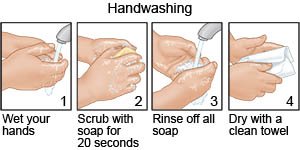Foley Catheter Removal
Medically reviewed by Drugs.com. Last updated on Apr 6, 2025.
What do I need to know about Foley catheter removal?
Your Foley catheter will be removed when you no longer need it. Your catheter may be removed by a healthcare provider. Your provider will let you know if you may remove your catheter at home. Your provider will make sure you have medical supplies to remove the catheter at home. Antibiotics may be given before catheter removal to prevent a bacterial infection.
What will happen during Foley catheter removal by a healthcare provider?
Your healthcare provider will insert a syringe into the balloon port of the catheter. This is the opening in the catheter that is not attached to the bag. Your provider will empty the liquid from the balloon with a syringe. You may have to take a deep breath in and slowly exhale. Controlled breathing will help relax your pelvic floor muscles. As you exhale, your provider will gently pull on the catheter to remove it. You may feel some discomfort as the catheter is removed.
Drugs used to treat this and similar conditions
Myrbetriq
Myrbetriq (mirabegron) is used to treat overactive bladder with symptoms of frequent or urgent ...
Botox
Botox is used to treat chronic migraines, excessive sweating, bladder conditions, eye muscle ...
Ozempic
Learn about Ozempic (semaglutide) for type 2 diabetes treatment, weight management, cardiovascular ...
Urecholine
Urecholine is used for abdominal distension, urinary retention
VESIcare
Vesicare is used to treat symptoms of overactive bladder such as incontinence and frequent ...
Tofranil
Tofranil is used for depression, enuresis, pain, primary nocturnal enuresis
VESIcare LS
VESIcare LS is used for neurogenic bladder, neurogenic detrusor overactivity
Toviaz
Toviaz (fesoterodine) is used to treat overactive bladder with symptoms of urinary frequency ...
Amitriptyline
Amitriptyline is a tricyclic antidepressant used to treat depression and, off-label, conditions ...
How do I remove the Foley catheter at home?
- Gather all medical supplies given to you by your healthcare provider. This may include a towel, syringe, and waste bag.
- Empty the drainage bag into a container or the toilet.
- Wash your hands with soap and warm running water. Dry your hands with a clean towel. Your provider may recommend that you wear gloves for this procedure to help prevent an infection.

- Remove the drainage bag from your leg. You may need to clamp or cap the end to prevent leaks. You can move the catheter tube in a full circle to the left and then to the right. Full circles in each direction can help make sure the catheter tube can move freely.
- Place the syringe into the balloon port on the catheter. Make sure you know which port is the balloon port. It is not the one where the urine comes out. Push and twist the syringe to make sure it is in the right position. Wait as the liquid from the balloon empties into the syringe. Remove the syringe from the balloon port and empty it in a sink or the toilet. Repeat this step until no more liquid is draining into the syringe.
- Gently pull the catheter out while you take controlled breaths. Urine may drip out as you remove the catheter. You may want to stand or sit in your shower or bathtub. If the catheter is hard to pull out, move it in a full circle in each direction again. Then try to pull the catheter out again. Stop if the catheter does not come out when you pull gently. Call your healthcare provider.
- Discard the catheter and syringe in the waste bag. Use a towel to wipe up urine or water that spilled during the removal process. Wash your hands again.
What will happen after Foley catheter removal?
You may see a small amount of blood in your urine the first few times you urinate. Bleeding may happen due to irritation of your urinary tract. You may be asked to drink plenty of liquids after the removal of your catheter. This will help to flush out bacteria that can build up while you are using a Foley catheter. Ask your healthcare provider how much you should drink, and which liquids are best for you. You may need to take antibiotics if you had surgery on your urinary tract.
Care Agreement
You have the right to help plan your care. Learn about your health condition and how it may be treated. Discuss treatment options with your healthcare providers to decide what care you want to receive. You always have the right to refuse treatment. The above information is an educational aid only. It is not intended as medical advice for individual conditions or treatments. Talk to your doctor, nurse or pharmacist before following any medical regimen to see if it is safe and effective for you.© Copyright Merative 2025 Information is for End User's use only and may not be sold, redistributed or otherwise used for commercial purposes.
Further information
Always consult your healthcare provider to ensure the information displayed on this page applies to your personal circumstances.
